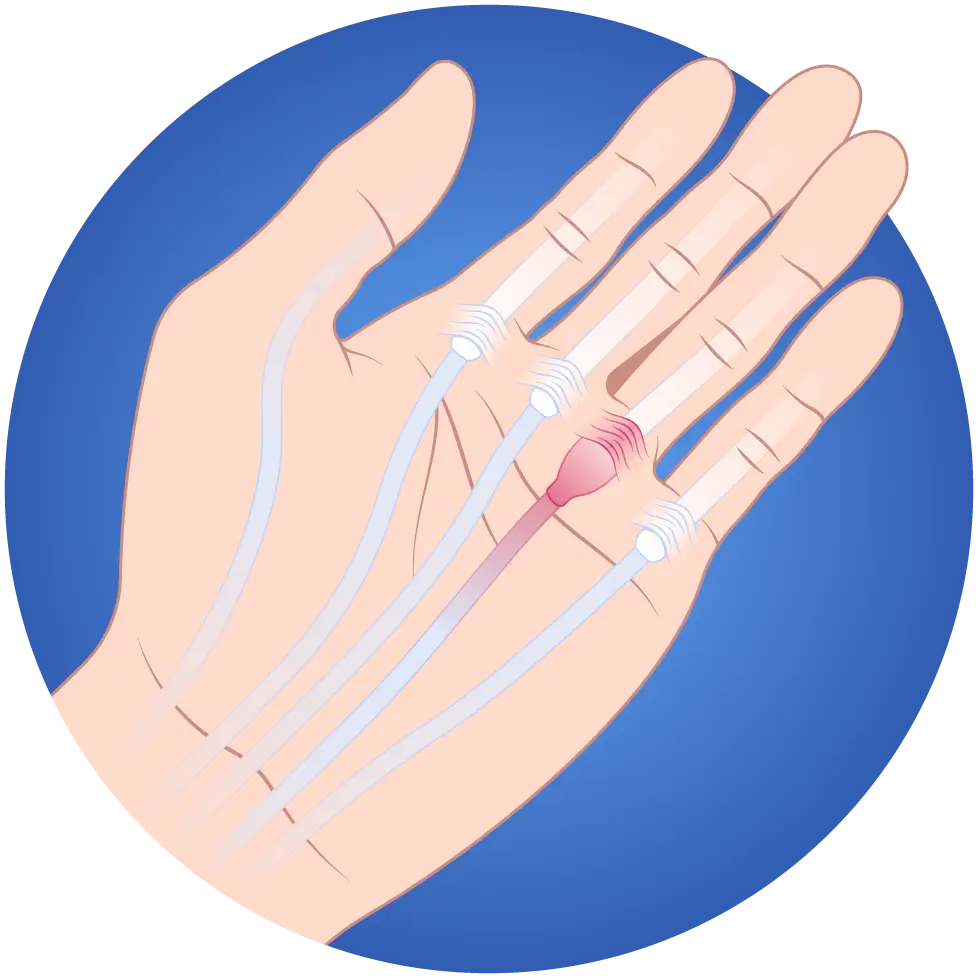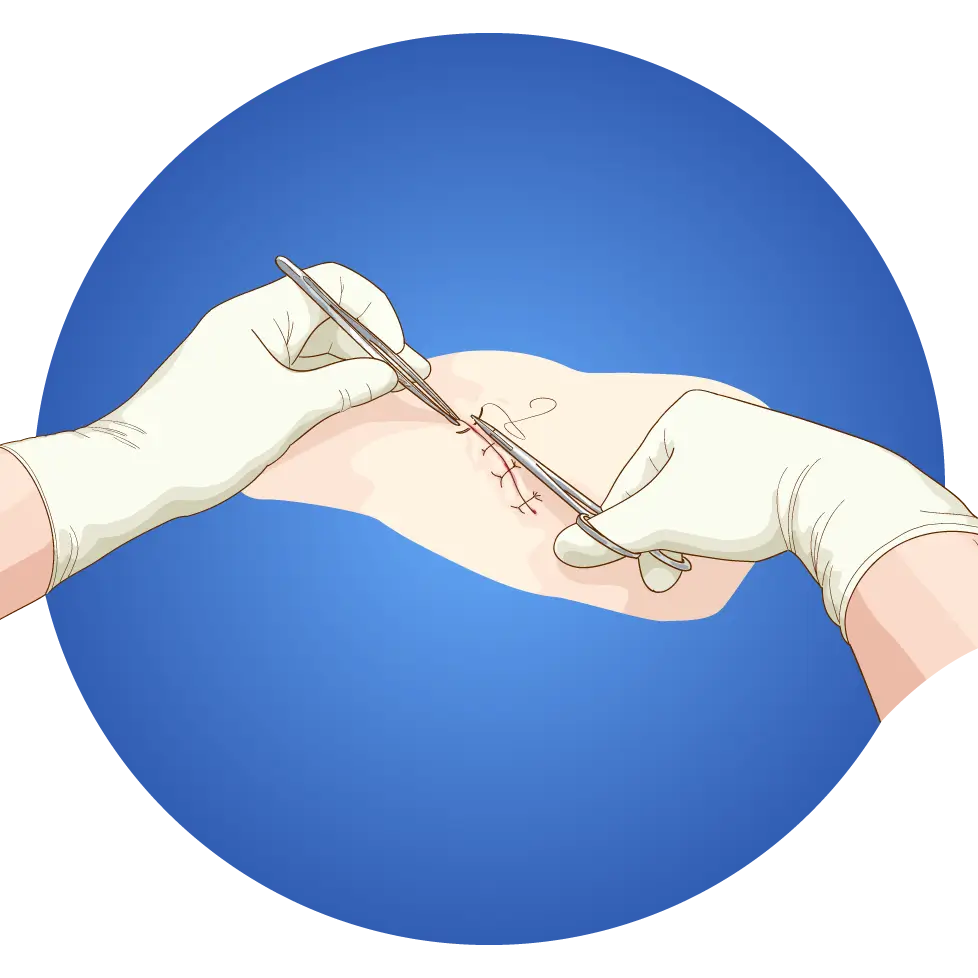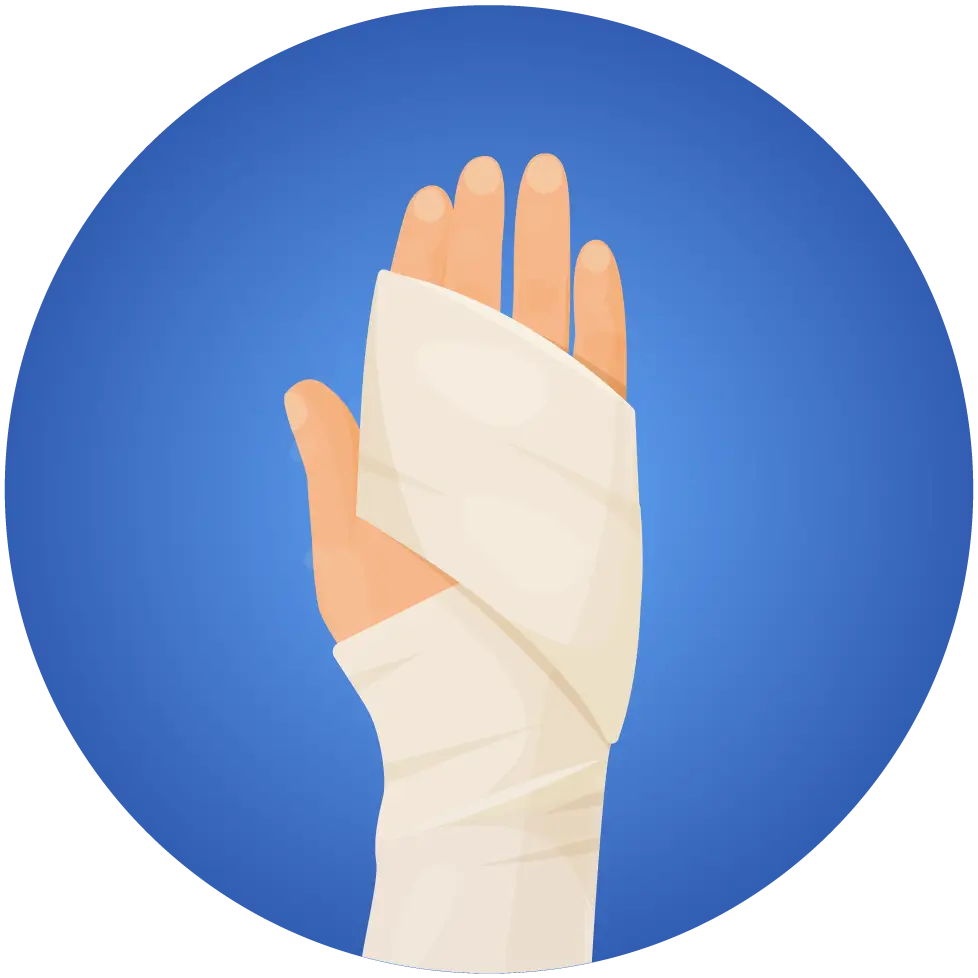What is Trigger Finger?
Trigger finger is a condition that causes one or more fingers to lock or catch in a bent position. The locking can be painful, and sometimes the affected finger requires assistance from the other hand to straighten.
Symptoms
One or more fingers get stuck or caught in a bent position. It is common to feel pain and tenderness in the palm near the affected finger, especially when gripping objects.
Causes of Trigger Finger
The flexor tendons in the fingers run through a tendon sheath. If the tendon becomes inflamed and thickened, it may struggle to glide smoothly through the sheath, causing the finger to catch or lock.
While this is a common condition, no specific external cause is usually identified. It may develop after overuse of the hand. Trigger finger is slightly more common in women but also affects men. The risk is increased for individuals with diabetes, rheumatoid arthritis, or local inflammation. It can also result from repetitive strain.
Treatment
Anti-inflammatory medication generally has little effect. Cortisone injections in the tendon sheath may provide temporary relief. Surgery is recommended if symptoms persist despite other treatments.


The surgery takes approximately 15 minutes and is performed under local anesthesia. You will not be able to see the surgical area as your arm will be draped and shielded with a cloth.
During the surgery, the tight portion of the tendon sheath is released, allowing the tendon to move freely.
Recovery expectations; normal finger movement typically returns within a few weeks, though swelling and tenderness may persist for a few months. You can go home immediately after surgery, but you should not drive, as you may feel tired or affected by anesthesia.
You can go home immediately but avoid driving due to potential drowsiness from anesthesia.
Mild discomfort or pain is common in the first few days. Pain relievers such as Alvedon (Paracetamol) or Panodil may help.


Keep the bandage dry while showering by covering your hand with a plastic bag secured with tape.
After about two weeks, the bandage and stitches will be removed at your follow-up appointment at ABC Ortopedi. After that, no further bandage is usually needed, and you can wash your hand as usual with soap and water.
Complications
Complications are rare. If you experience severe pain, excessive bleeding, or fever, contact the clinic during office hours via abcortopedi.se or call the emergency number provided on the day of surgery. For urgent issues during evenings, weekends, or holidays, call 1177 or visit the nearest urgent care center.
Sick Leave
If your work does not require heavy hand use, you may return within a few days. If your job is physically demanding, you may require 2–4 weeks of sick leave.
Rehabilitation
It is common that the hand and fingers get swollen. It is important to prevent swelling by holding your hand in a high position, above heart level. While sitting down, rest your hand on a pillow for support. Move your shoulder, elbow, and fingers every two hours to prevent stiffness. Briefly allow your arm and hand to hang freely while walking to reduce tension in the neck and shoulder.
After stitch removal, start using your hand for daily activities and gradually increase movement and strength.
We recommend booking an appointment with a hand therapist. Contact Stockholms Sjukhem Rehab at 08-12283150 or you can find additional clinics at 1177.se.